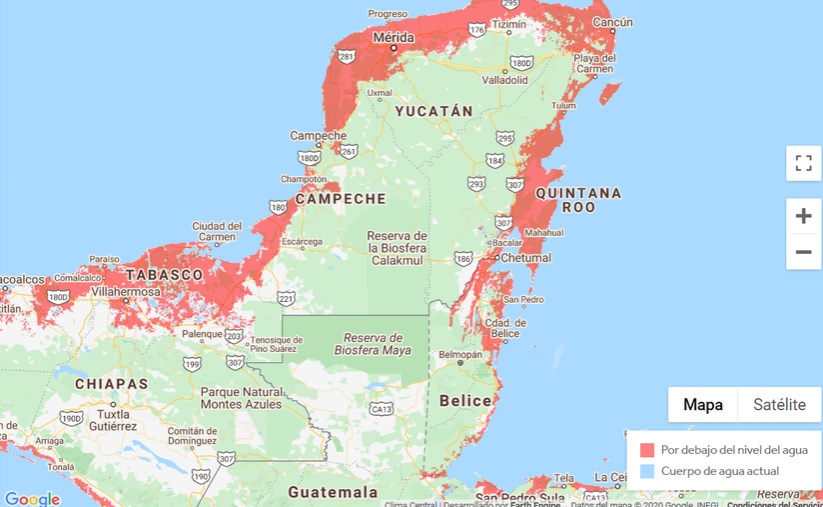Cancun, Quintana Roo (July 3, 2020).- Chiquilá, Holbox, Cancún, Isla Mujeres, Cozumel, Puerto Morelos, Tulum, Akumal, Sian Ka’an, Mahahual and Xcalak would be underwater if the sea level rose 10 meters, an extreme panorama that could be reached 100 years from now.
While in the state of Yucatan the coastal communities of Río Lagartos, El Cuyo, Dzilam Bravo, Santa Clara, Chabihau, San Crisanto, Telchac Puerto, Uaymitún, Progreso, Yucalpetén, Chelem, Chuburná Puerto, Sisal and Celestún will also disappear under the waters, according to the predictions made by Climate Central.
A projection made by the independent organization Climate Central shows how rising sea levels could dramatically change the peninsula’s geography.
Climate Central sea-level maps are based on peer-reviewed science in leading journals. These maps should be regarded as screening tools to identify places that may require deeper investigation of risk. Big datasets always include error. Outside of the United States, maps are based on global-scale datasets for elevation, tides, and coastal flood likelihoods. Inside the U.S., more accurate but still imperfect data are used.
Areas lower than the selected water level and with an unobstructed path to the ocean are shaded red. By default, areas below the water level but that appear to be protected by ridges (and in the U.S., levees) are not shaded.
Our approach makes it easy to map any scenario quickly and reflects threats from permanent future sea-level rise well. However, the accuracy of these maps drops when assessing risks from extreme flood events. Our maps are not based on physical storm and flood simulations and do not take into account factors such as erosion, future changes in the frequency or intensity of storms, inland flooding, or contributions from rainfall or rivers.
Each map provides more detailed and map-specific documentation via the small ⓘ information icons scattered throughout the interface, including behind the Settings section.
Currently selected settings
| Water Level | 10.0 m |
| Units | meters |
| Areas to show as threatened | exclude potentially protected areas |
Definitions
“Tideline” is used to denote the recent historical average of the highest daily local tide level or, technically, the mean higher high water (MHHW) line. Within the United States, NOAA’s VDatum tool is used for MHHW values; elsewhere, modeled tidal increments are added to recent historical average sea surface heights measured by satellite.



